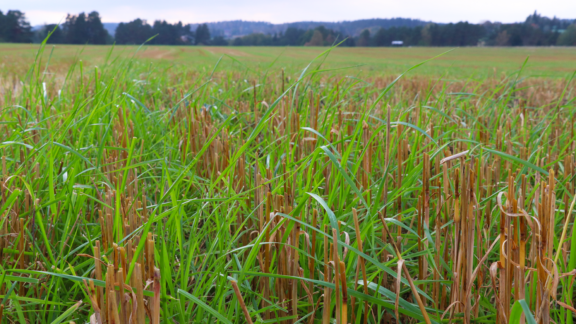Contribution of water erosion to organic carbon and total nitrogen loads from mineral agricultural soils
Article: Contribution of water erosion to organic carbon and total nitrogen loads in agricultural discharge from boreal mineral soils
Authors: Manninen Noora, Kanerva Sanna, Lemola Riitta, Turtola Eila, Soinne Helena
Journal: Science of The Total Environment
Year: 2023
Loss of organic matter from arable soils is linked to surface water quality, climate change and soil productivity.
The main aim of this study was to quantify the role of water erosion in total organic carbon and nitrogen loads exported in agricultural discharge from boreal mineral soils under various cultivation practices. The research was conducted in the experimental sites of the Natural Resources Institute Finland (Luke) in Jokioinen, located in southwest Finland, and Toholampi in midwest Finland.
The studied fields had crop rotations with 4¬–5 years cycles of cereal and grass. The cultivation practices included conventional and organic cultivation, both with autumn plowing until 20 cm depth, conventional no-till cultivation with direct-sowing, and unmanaged natural grassland. In the experiment, surface water and subsurface drainage were collected near-continually over 2 years, and the concentrations of carbon and nitrogen in different forms were analysed from the discharge samples.
The results showed that erosion contributed up to 35 % of total organic carbon and 20 % of total nitrogen loads in the clayey soils – the rest being in dissolved form. In the sandy soil, erosion was negligible.
Eroded carbon and nitrogen losses were largely explained by water discharge volume and intensity, as well as soil disturbance. Plowing of clayey soils, whether annually or less frequently, shortly before high-intensity discharge events caused high sediment-exported carbon and nitrogen loads. Eroded sediment loads were consistently low from unmanaged grassland and no-tilled plots. On the other hand, the clayey soil plots with minimum disturbance produced high dissolved carbon and nitrogen loads and, thus, the total carbon and nitrogen losses under the varying cultivation practices were similar. Dissolved organic carbon loss was promoted by high surface soil organic carbon content.
Controlling both eroded and dissolved organic matter loss in cultivation is challenging. When assessing impacts of cultivation practices on the discharge-induced organic matter loads, it is important to take into account all the exported fractions in the dissolved, particulate, and mineral-associated organic matter, and further study their fate.



